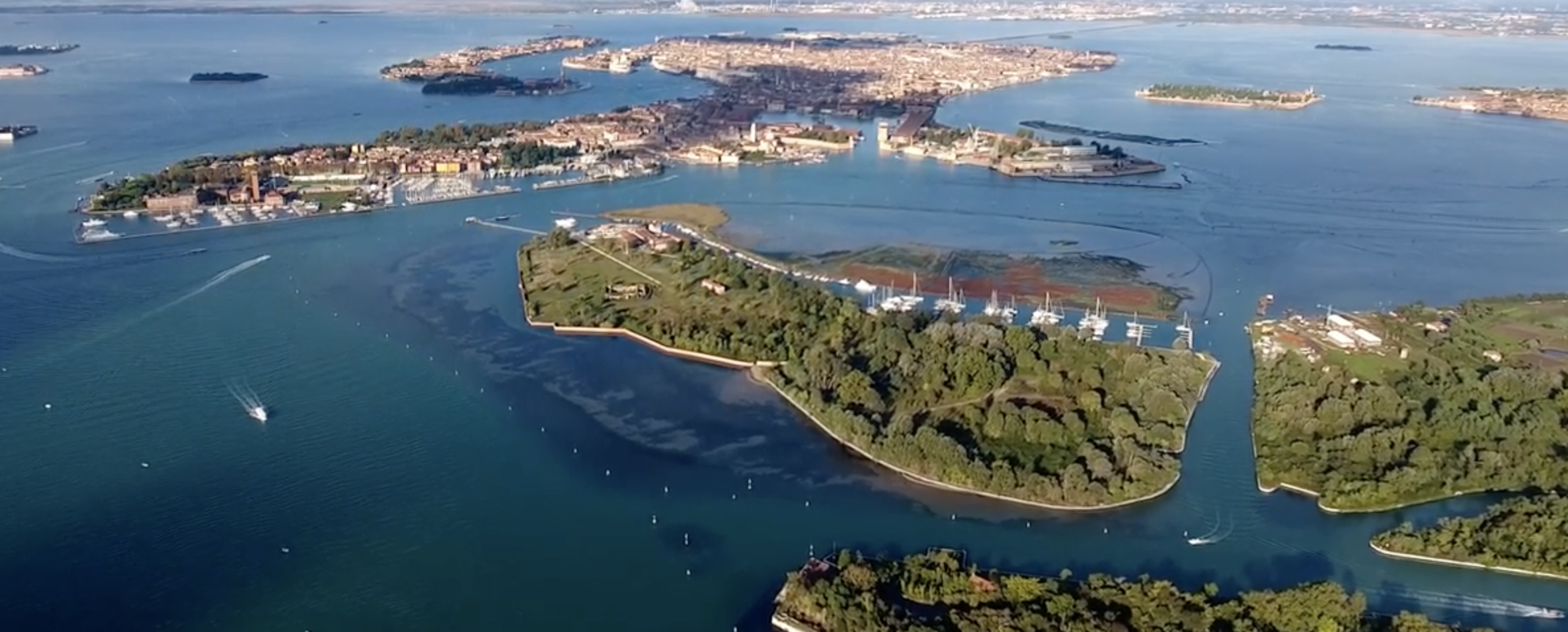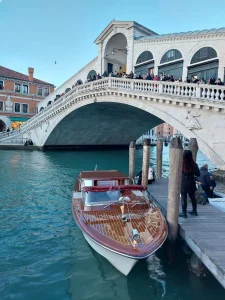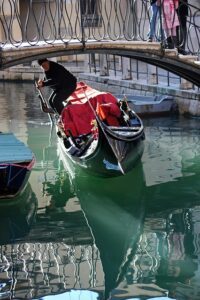Certosa Island — Venice’s Green Heart and Hidden Future
When most travelers picture the Venetian Lagoon, they imagine Murano’s glassblowers, Burano’s colorful houses, or the ancient mosaics of Torcello. But just a few minutes from the historic center lies another island — quieter, greener, and more forward-looking: Isola della Certosa.
Certosa is not just another stop in the lagoon; it’s a story of rebirth. Once a Carthusian monastery, later a military fortress and an industrial ruin, it is now Venice’s most inspiring experiment in sustainability — a public park, sailing hub, and cultural space where Venetians come to breathe, walk, and reconnect with nature. Yet, remarkably, few visitors even know it exists.
This article explores the island’s extraordinary journey — from monastic silence to ecological innovation — and explains why Certosa deserves a full chapter in your next Venetian adventure.
🌿 1. Where Is Isola della Certosa?
The island lies just east of Venice’s historic core, across from Sant’Elena and not far from the Lido. A quick five- to ten-minute vaporetto ride from San Marco delivers you into an entirely different world: green fields instead of marble palaces, open skies instead of campaniles, birdsong instead of bells.
From Certosa, you can still see the city’s skyline — domes, towers, and shimmering reflections — but you stand surrounded by grass, trees, and water. The air feels fresher; the silence, liberating. It’s easy to understand why both monks and soldiers once considered this small island a place of strategic and spiritual refuge.
⛪ 2. The Carthusian Origins — An Island of Prayer
The name “Certosa” comes from the Carthusian Order (Certosini in Italian), a monastic community known for silence, solitude, and devotion. In 1424, a group of monks from Florence founded their charterhouse here, transforming a marshy islet into a self-sufficient microcosm of faith and labor.
- They drained the land and cultivated orchards, vineyards, and vegetable gardens.
- They built cloisters, refectories, and chapels modeled on other great Charterhouses in Europe.
- They lived by strict silence, breaking it only for prayer or sacred chant.
For centuries, Certosa remained a world apart — a peaceful counterpart to the bustling mercantile city nearby. From their cloisters, the monks could see the sails of trading ships entering the lagoon, yet their life revolved around contemplation and cultivation, not commerce. Venice may have ruled the seas, but here, the Carthusians ruled themselves.
⚔️ 3. From Monks to Soldiers — The Napoleonic Transformation
In 1797, Napoleon marched into Venice, bringing with him a wave of secular reforms that upended centuries of religious life. The monasteries were suppressed, and the Carthusians were forced to abandon Certosa. Within months, silence gave way to the noise of soldiers.
The French army converted the monastery into a military outpost. Cloisters became barracks; gardens became storage yards. Later, under Austrian and then Italian control, the island remained a strategic military site well into the 19th and early 20th centuries. The once-peaceful island became a world of drills, cannons, and uniforms — its contemplative rhythm replaced by the march of boots on stone.
Its position near the lagoon’s entrance made it ideal for defense, but history left scars: demolition of sacred spaces, neglect of art, and the loss of centuries of tranquility.
⚙️ 4. The 20th Century — Industry and Abandonment
By the early 1900s, Certosa had outlived its military usefulness. Venice’s shifting priorities turned it into a shipyard and repair dock. For decades, workshops and storage sheds dotted the island. Small cargo boats and fishing vessels were built or mended here, continuing the Venetian tradition of maritime craftsmanship.
But after World War II, industrial activity declined. The island fell silent once again — this time not from monastic meditation, but from abandonment. For nearly half a century, Certosa was forgotten: overgrown, crumbling, and accessible only to a handful of fishermen, sailors, and curious wanderers. It became a ghost island — visible from Venice’s eastern promenades, yet rarely visited.
🌱 5. The Rebirth — A Green Vision for the 21st Century
At the dawn of the new millennium, Venice began to dream differently. The goal was no longer industrial expansion, but ecological renewal. And in that vision, Certosa became the laboratory.
The non-profit organization Vento di Venezia launched an ambitious regeneration project with support from the city and the EU. The plan aimed to transform the derelict island into a model of sustainability — a place where nature, culture, and community could coexist.
The Transformation
- 🌳 Environmental restoration: Clearing ruins, planting trees, and re-establishing wetlands that nurture native flora and fauna.
- 🚶 Public access: Creating pathways, picnic areas, and green lawns for Venetians and travelers alike.
- ⛵ Marina Certosa: Establishing one of Venice’s main yacht harbors — a hub for sailing schools and lagoon explorers.
- 🎭 Cultural programming: Hosting concerts, art installations, and community events that re-energize the island’s creative spirit.
The result? Certosa today is Venice’s “green lung.” It proves that the lagoon can evolve without losing its identity — an example of responsible renewal in a fragile ecosystem.
🏞️ 6. What to See and Do on Certosa
Visitors to Certosa experience a Venice most tourists never imagine. There are no souvenir shops or crowded calli — only open air, calm water, and space to move.
The Park
Wide lawns and shady groves make the island perfect for picnics, strolls, and bike rides. Locals come here to read, sunbathe, or simply escape the dense rhythm of the city.
The Marina
The Marina Certosa hosts yachts, sailboats, and eco-friendly vessels. You can often watch crews preparing for regattas or children learning to sail under bright Venetian skies. With Tour Leader Venice, private lagoon itineraries can include a stop here — an elegant blend of adventure and tranquility.
Restaurants & Relaxation
Try Il Certosino, a laid-back restaurant overlooking the marina, where locals sip spritzes as the sun sets behind San Marco’s domes. Expect casual Venetian dishes — seafood risotto, grilled fish, cicchetti — served with unbeatable views.
Art & Architecture
Scattered across the island are fragments of its past: monastery walls, military ruins, and Biennale installations. In recent years, artists have used Certosa’s spaces for large-scale sculptures and environmental art — transforming decay into dialogue.
🦆 7. Nature & Wildlife — Venice’s Secret Ecosystem
One of the island’s greatest successes is its ecological restoration. Certosa is now home to a vibrant lagoon ecosystem:
- Birdlife: herons, cormorants, egrets, moorhens, and migratory species nesting among reeds.
- Vegetation: poplars, tamarisks, and native shrubs typical of the Venetian wetlands.
- Wetlands: shallow pools where amphibians thrive and water reflects the changing sky.
Early mornings bring a symphony of birds; evenings bring pink-hued sunsets mirrored in still water. For photographers, nature lovers, or anyone craving stillness, Certosa is a revelation — a natural Venice within the Venice we think we know.
🎨 8. Art, Events, and Community Life
Certosa isn’t only about peace and nature — it’s also about creativity. The island frequently becomes a stage for cultural expression.
- Venice Biennale: In alternate years, installations appear across the park, offering an open-air counterpart to the Arsenale and Giardini.
- Music & Cinema: Summer brings outdoor concerts and film screenings beneath the stars.
- Regattas & Sailing Festivals: Marina Certosa often hosts lagoon races and eco-boat events celebrating Venice’s maritime heritage.
- Workshops & Eco-Education: Families and students can join environmental labs that teach about lagoon biodiversity and conservation.
These events, large or small, revive the island’s centuries-old role as a meeting point for mind, hand, and spirit — where contemplation meets creation.
💡 9. Why You Should Visit Certosa
In a city famous for crowds and narrow alleys, Certosa offers rare freedom. It’s not just a detour — it’s a different Venice altogether.
- 🌳 Peace: A quiet retreat after exploring the maze of San Marco.
- 🚴 Nature & Movement: Space to walk, cycle, or sail — things you can’t easily do elsewhere in Venice.
- 👨👩👧👦 Family-Friendly: Perfect for kids who need open air after the city’s tight calli.
- 🎭 Cultural Edge: Biennale installations, concerts, and local events bring the arts outdoors.
- ♻️ Sustainable Venice: A living example of how the lagoon can evolve responsibly.
And perhaps most importantly, Certosa is a place Venetians themselves love. It’s their park, their marina, their weekend escape — a space where locals and visitors can share the same quiet horizon.
🚤 10. How to Get to Certosa
- Vaporetto: Lines 4.1 and 4.2 stop directly at Certosa. From San Zaccaria (by St. Mark’s), the journey takes about 10 minutes.
- Private Boat: With Tour Leader Venice, enjoy a custom route through the lagoon’s hidden islands — Certosa included.
- Kayak or SUP: For adventurous travelers, it’s possible to paddle from Sant’Elena — a perspective few ever see.
Once on the island, everything is walkable. Wooden bridges and boardwalks connect the park areas; gravel paths lead to viewpoints and picnic spots. Bring sunscreen, water, and curiosity.
🏖️ 11. Combine Certosa with Nearby Islands
Certosa pairs beautifully with its neighbors. A private boat tour can weave through:
- Sant’Elena — Venice’s greenest district, full of gardens and Art Deco charm.
- The Lido — golden beaches and Liberty-style villas.
- Murano, Burano & Torcello — a full-day island-hopping adventure.
- A lagoon aperitivo cruise — ending with a glass of Prosecco at Certosa’s marina as the city glows at dusk.
These itineraries reveal Venice’s lesser-known side — the one locals cherish and travelers rarely find.
🌅 12. Certosa — Venice’s Island of the Future
Isola della Certosa tells the story of a city always learning to adapt. From monks to soldiers to sailors, its identity has changed again and again — yet it has never lost its sense of purpose. Today, its rebirth as a green park and cultural haven shows what Venice could become: sustainable, open, alive.
When you stroll under its trees or watch the sails rise against the skyline of San Marco, you understand that this is not just an island — it’s an idea. Certosa represents Venice’s promise to itself: to balance beauty with responsibility, heritage with hope.
👉 Book your private lagoon tour with Tour Leader Venice and discover Isola della Certosa — where Venice’s history meets its future.
❓ FAQs — Isola della Certosa, Venice’s Green Heart
Can you visit Certosa Island in Venice?
Yes. Isola della Certosa is open to the public and just 10 minutes by vaporetto from San Zaccaria near St. Mark’s Square. Visitors can enjoy its park, marina, restaurant, and art installations year-round. For a more exclusive experience, you can reach it by private boat with Tour Leader Venice and explore the island as part of a custom lagoon itinerary.
What can you do on Certosa Island?
Certosa offers a refreshing mix of nature, culture, and sailing life. You can stroll or picnic in its green park, watch regattas at Marina Certosa, visit Biennale installations, or dine at Il Certosino overlooking the water. The island also hosts concerts, outdoor cinema nights, and eco-education events — a rare blend of leisure and sustainability in Venice.
How can I include Certosa in a private lagoon tour?
Tour Leader Venice creates bespoke itineraries that combine Isola della Certosa with nearby gems like San Servolo, San Lazzaro degli Armeni, and San Giorgio Maggiore. Each journey includes private boat transfers, local insight, and flexible timing. To end your day in true Venetian style, pair it with our Venice Sunset Tour on a Traditional Bragozzo Boat — the most serene way to watch the lagoon’s golden hour unfold.







